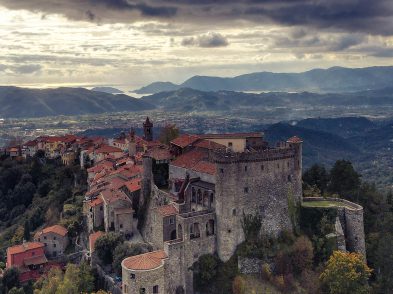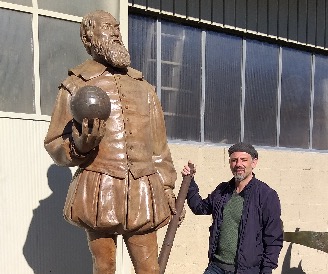Exploring the role of architecture in Italian Renaissance painting, the new major exhibition at London’s National Gallery, Building the Picture, pleases not only art lovers but architects and mathematicians, too. Rather than Madonnas and Magi, perspective is in the spotlight, leading to an appreciation of the fanciful spaces created by architecture, while having an overview of ancient urban town planning in Italy.
‘The sense of mass, scale and three-dimensionality introduced by buildings changes the balance and feel of a painting,’ said exhibition curator Caroline Campbell. ‘This exhibition provides a wonderful opportunity to think about how pictures can achieve an architectural sort of beauty.’ In actual fact, urban landscape or fantasy buildings, beyond any real or metaphorical meaning, had a decorative, enlivening and aesthetic function; they helped the structure and proportion of the painting, adding to the structural beauty of the entire image and stimulating emotional response in the viewers. Architecture features were not casual: in the Renaissance, painting and architecture were part of broader visual skills and were closely interwoven, and often pictures offered hints to architects. In Renaissance Italy, painters were architects, architects were sculptors, artists were scientists, and even politicians were thinkers.
The exhibition at the National Gallery features works mostly from Tuscany, including Verrocchio’s wonderful Ruskin Madonna, on loan from the National Gallery of Scotland, on display in London for the first time in 30 years. The impressive classical ruins possibly refer to a Roman Temple, which, according to the legend, collapsed when Christ was born, representing the triumph of the new religion over the old. Perspective is put to exacting effect: the ground is receding to a vanishing point somewhere beyond the walls and the arch of an imposing structure gives a tantalizing glimmer of the open space in the distance.
Architecture turns storyteller in Domenico Veneziano’s St Zenobius, Bishop of Florence, restores to life a widow’s son killed by an ox cart in Borgo degli Albizzi. From the Fitzwilliam Museum in Cambridge, this vivid tempera on panel improves the saintly reputation of the Florentine bishop as well as giving a faithful representation of the location, a medieval street of Florence that has not changed much over the centuries. Campbell remarked, ‘We can better appreciate the painted action if framed by architecture conferring more power and feeling to the image, with its elegant proportions and symmetry.’
Building the Picture: Architecture in Italian Renaissance painting
April 30 to September 21
National Gallery, Sunley Room
Free entrance






